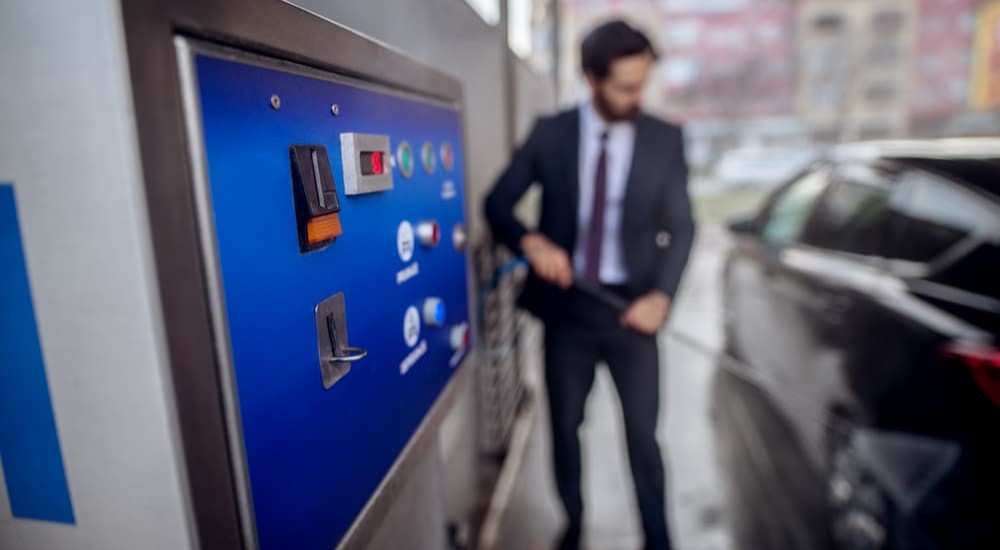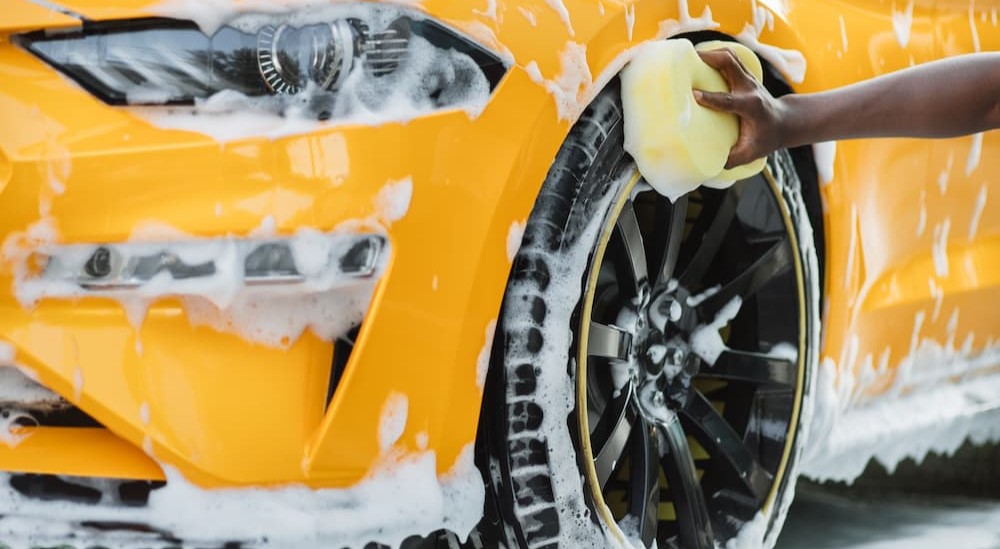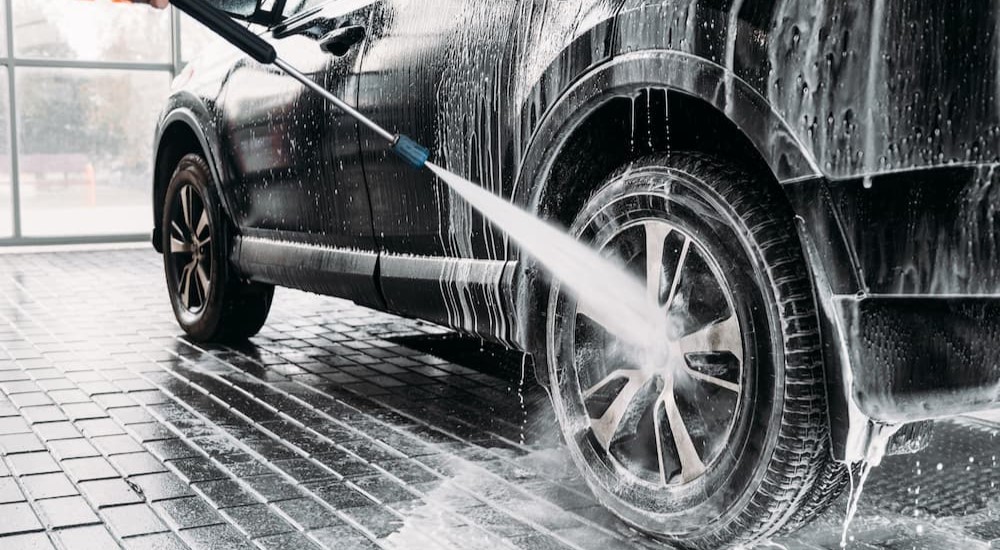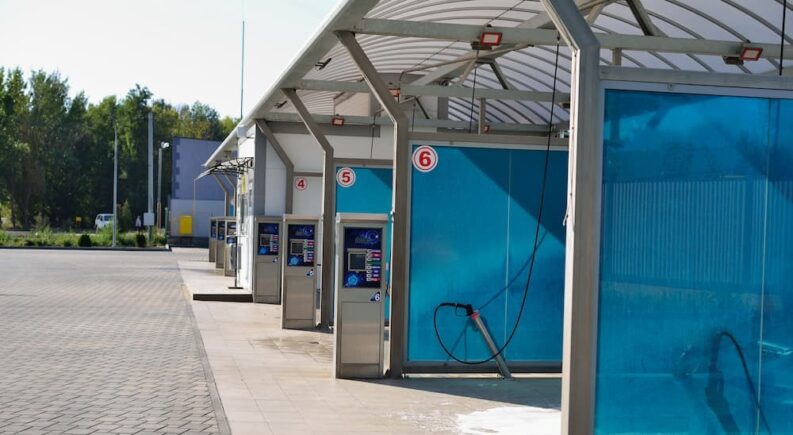The struggle to keep your vehicle clean is a tale as old as time. From road salt in the winter to long, dry, dusty summers, there is no shortage of forces conspiring to contaminate your car, which is what makes regular car washes so important. This Sisyphean task has even been immortalized in popular song, with 1990’s songstress Sheryl Crow penning a poignant ditty on the subject in her breakout hit that catalogs “The good people of the world are washing their cars on their lunch break. Hosing and scrubbing as best they can in skirts in suits.”
For those without access to a hose or driveway, the local car wash is often the only route to a clean car. While automatic car washes and handwashes can be pricey, self-service car washes offer an affordable alternative, allowing drivers to clean their vehicles at a fraction of the price while pinpointing areas of concern. Yeah, you might end up the subject of a hit song by a popular singer-songwriter, but that’s a small price to pay for the convenience and accessibility. That said, the self-service car wash process can be mystifying to drivers who have never ventured into those cinder block bays, and even experienced car-washers can benefit from a little refresher from time to time.

Why Wash It?
Looks
First and foremost, keeping a vehicle spick-and-span is all about aesthetics. You wouldn’t set out for the office with a stained shirt or mud-caked shoes, but all too often, drivers don’t extend this same sense of propriety to their vehicles. A clean vehicle doesn’t just look good; it can make you feel good, just like a new outfit or fresh haircut.
Rust
Keeping your vehicle clean is a matter of personal pride for many drivers, but it can also have some real benefits beyond the purely aesthetic. If left untreated, vehicle grime and contamination can easily start to eat through your paint job, exposing bare metal to the open air and allowing rust to take hold. Once it appears, rust can easily spread to important underbody components and even the frame, potentially taking years off your vehicle’s life as it steadily eats through the metal.
Value
A good car-washing routine can pay dividends if you ever plan on trading in your vehicle or selling it on the private market. Regular car washes will prevent rust, faded paint, and cloudy glass, signaling to a potential buyer that the vehicle was well cared for over its life. A dirty, dingy car is a red flag for any buyer, and not just because of the way it looks. If the previous owner didn’t care enough to clean the vehicle, chances are they also didn’t keep up with regular maintenance tasks and repairs.
Safety
Most drivers don’t think of a dirty vehicle as a safety issue, but it certainly can be. If left unaddressed, dirty mirrors, lights, and windshields can be a real liability, with built-up dirt and grime making it difficult to spot other vehicles, pedestrians, and obstacles. If you’re at the point where your car is so filthy that you’re actually having trouble seeing the road around you, it’s well past time for a wash.
Efficiency
This one might be a little hard to believe, but a clean vehicle is actually more efficient than a dirty one. There have been some counter theories floated in popular culture that say a dirty car is more aerodynamic than a clean car for the same reason that a dimpled golf ball flies further than a perfectly smooth sphere of the same size, but luckily everyone’s favorite basic cable debunkers put that one to rest on an episode of “Mythbusters” back in the day.

Self-Service Car Wash Hacks
Choose Your Spot
Picking your spot is important when it comes to getting a good car wash. When you pull into the self-service bay, make sure you leave plenty of room on all sides of the vehicle so that you can easily walk around the exterior. This will make it easier to ensure a thorough, consistent wash, as you’ll easily have access to every part of the vehicle. While the hoses at most self-service car washes have plenty of slack, it’s never a bad idea to park as close to the center of the bay as possible.
Follow the Procedure
As anyone who’s ever struggled through an algebra class knows, following the correct order of operations can be vital. This same truth extends to the world of car washing, where tackling your tasks out of order can lead to a frustrating and inefficient experience. When it comes to a self-service car wash, most are designed with a dial that lays out each step of the car-washing process in clockwise order, but for reference, the standard procedure normally starts with rinsing the entire vehicle with water to remove or loosen any conspicuous surface grime.
Next, apply soap to the vehicle using either the pre-wash or pre-soak option on the dial (or don’t, more on that next). Scrub the wheels down with a foam brush, if available, and then rinse the entire surface of the vehicle with a high-pressure rinse. Starting from the top down guarantees that dirt will only travel in one direction, reducing the need for multiple rinses. If you’re looking for a little extended protection, hit the vehicle with wax or some sort of surface protection before drying the vehicle with an automatic dryer or hand towels.
Drying your vehicle might seem a little redundant as it’ll happen naturally, but using something like polyvinyl alcohol (PVA) chamois cloth can mean the difference between a streaky, smeared car and a perfect glossy finish. Some car washes might offer additional steps, such as a tire cleaner towards the beginning of the process and a spot-free rinse at the end, but it’s important to use these features at the right point in the washing process.
The Problem With Pre-Soak
As we alluded to above, the pre-soak or pre-wash step isn’t always what it’s cracked up to be. While it might sound like an important part of the procedure, this pre-soak is often just a diluted, low-pressure version of the high-pressure soap option you’ll encounter two steps down the dial. As such, most car wash experts recommend skipping straight to high-pressure soap, which will do a better job of loosening grime while still adequately soaping up the car.
Feed the Meter
If your local self-service car wash takes plastic, washing your vehicle can be as easy as swiping a card, leisurely completing your wash, and being on your way. For the rest of us, it can be a poorly choreographed ballet that involves skipping between the meter and hose, anxiously trying to squeeze in one last rinse before the timer runs out. Most self-service car washes will tell you exactly how much time you’re getting for your money, which makes it easier to formulate a plan of attack. If you find yourself at a car wash that’s a little more cryptic when it comes to timing, try feeding the meter with the lowest possible denomination and see how much time it gets you. This will ensure you don’t overpay for your wash or, worse, run out of quarters while your vehicle is still caked in suds.
B.Y.O. Tools
Self-service car washes can be a great resource, but they also tend to get a good amount of traffic. There’s nothing wrong with that, but it does mean that drivers should expect an occasional wait and a less-than-ideal set of car-cleaning equipment. The brushes provided at self-service car washes go through a lot of abuse and aren’t typically cleaned between each customer. That long brush might look ideal for scrubbing hard-to-reach spots around the vehicle, but it is probably packed with grime and other particulates that might end up doing more harm than good. If you’re looking for the best possible results, we’d recommend bringing your own scrubber, washing mitt, and even wheel brush with you next time you head out for a car wash. If you do have to settle for the provided brush, we strongly urge you to blast it with a high-pressure rinse before letting it touch your car. This will remove some of the dirt and debris, meaning fewer scrapes and scratches to your paint job.
Hit Those Wheel Arches
If there’s one area that often gets neglected in most car-washing routines, it’s the wheel arches. The area surrounding your wheels takes a lot of abuse in the course of everyday driving, with dirt, salt, rocks, oil, and other fluids getting flung up into the arches. When these contaminants accumulate, they can lead to dangerous and costly corrosion, which is why it’s so important to pay extra attention to your wheel arches next time you’re at a self-service car wash. Hit this area with a high-pressure rinse, then follow up with a little soap before finishing with another high-pressure rinse. It might not be the easiest part of the vehicle to see, but skimping on your wheel arch routine could cost you big in the long run.

An Essential Part of Car Maintenance
A self-service car wash might not be the most fun part of your vehicle maintenance routine, but it is important. Keeping your vehicle clean can have myriad benefits for the average driver in terms of personal pride, resale value, efficiency, and even safety, which is why following the correct procedure is essential. We’ve touched on some of our favorite tips and tricks, but in the end, it’s all about finding a process that’s comfortable and convenient for you and your vehicle. If you’re not happy with the equipment, service, or cleanliness of your local self-service car wash, don’t be afraid to explore some other options in the area. They can differ drastically when it comes to the quality of materials and even water quality, which can make a big difference in the end results. Soft, heated water, for example, tends to leave fewer mineral deposits––and therefore streaks––on vehicles, so don’t be afraid to shop around until you find a self-service car wash that works for you.

